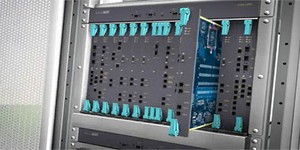Researchers boost Wi-Fi range by over 60m for IoT devices
October 23, 2019 | 11:52
Companies: #brigham-young-university-byu #the-university-of-utah #washington-university

Researchers at Brigham Young University (BYU), Washington University, and the University of Utah have announced a software-based upgrade for Wi-Fi networks which, they claim, could boost the working range of Internet of Things (IoT) devices without requiring any hardware upgrades.
Taking aim at the Internet of Things (IoT), the hip new term for machine-to-machine communications which includes 'smart' devices installed in homes, a cross-university research claims to have unlocked a way to increase the distance a low-power device can operate away from a Wi-Fi access point by over 60 metres - without requiring any hardware modifications.
'That’s the really cool thing about this technology: it’s all done in software,' explains Phil Lundrigan, assistant professor of computer engineering at BYU, of the technology his team developed. 'In theory, we could install this on almost any Wi-Fi-enabled device with a simple software update.'
There's a catch, however: The On-Off Noise Power Communication (ONPC) protocol developed by the team isn't well-suited to high-bandwidth devices like smartphones and laptops. Instead, it concentrates on encoding useful information into extremely low bitrates - as low as a single bit per second, well below the 1Mb/s at which traditional Wi-Fi stops operating.
A single bit, though, is enough to get data from remote sensors. A garage door sensor, air quality monitor, sprinkler system - all are cited by the researchers as being able to send useful data over ONPC, at ranges 67 metres greater than via traditional Wi-Fi with no effect on the Wi-Fi network itself. 'We can send and receive data regardless of what Wi-Fi is doing; all we need is the ability to transmit energy and then receive noise measurements,' claims Lundrigan. 'We could apply this to cellular or Bluetooth as well.'
Lundrigan has not indicated a timescale for commercialisation of ONPC.

MSI MPG Velox 100R Chassis Review
October 14 2021 | 15:04








Want to comment? Please log in.